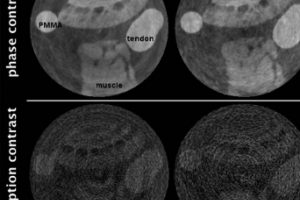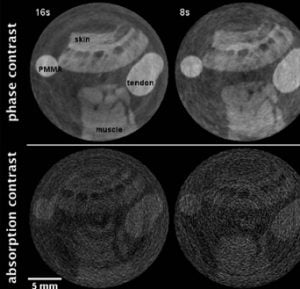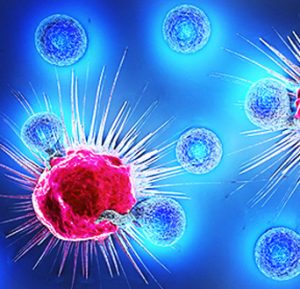
A sampling of some of the innovations researchers are working on at Johns Hopkins.
High resolution X-ray images.  Existing medical imaging techniques have limitations: X-rays offer good spatial resolution, while an MRI and ultrasound show soft-tissue contrast. A team from the Johns Hopkins Krieger School of Arts and Sciences is seeking to combine imaging techniques through X-ray differential phase-contrast, which uses the phase change of the X-ray to create images with both spatial resolution and good soft-tissue contrast. The technology can be used for high-accuracy mammograms and whole-body radiography. The images will allow health-care professionals to see the difference between artier walls, low-density lipid deposits and fibrosis or calcified plaque capsules. The technology also could be used to scanned luggage at security checkpoints or find defects in industrial products. The Johns Hopkins team is building and testing a prototype using a philanthropic grant fund made possible by alum Louis Thalheimer.
Existing medical imaging techniques have limitations: X-rays offer good spatial resolution, while an MRI and ultrasound show soft-tissue contrast. A team from the Johns Hopkins Krieger School of Arts and Sciences is seeking to combine imaging techniques through X-ray differential phase-contrast, which uses the phase change of the X-ray to create images with both spatial resolution and good soft-tissue contrast. The technology can be used for high-accuracy mammograms and whole-body radiography. The images will allow health-care professionals to see the difference between artier walls, low-density lipid deposits and fibrosis or calcified plaque capsules. The technology also could be used to scanned luggage at security checkpoints or find defects in industrial products. The Johns Hopkins team is building and testing a prototype using a philanthropic grant fund made possible by alum Louis Thalheimer.
Third-generation solar-cell technology. There are two main ways to optimize the efficiency of solar cells, a clean,  renewable source of energy that uses sunlight to generate power: creating new materials with excellent solar-cell properties; or improving the architecture of the device to increase efficiency. Silicon-based solar cells now dominate the market but are energy-intensive to produce and require large amounts of material. Johns Hopkins researchers at the Whiting School of Engineering have developed and tested concentrators to maximize light absorption in third-generation solar cells in a cost-effective way. The technology dramatically increases efficiency by creating lenses that transmit more than 70 percent of the incoming solar radiation and deliver up to 20 times the current of existing third-generation technologies. Efficient, thin-cell solar film could be transformative in the harnessing of solar energy across markets.
renewable source of energy that uses sunlight to generate power: creating new materials with excellent solar-cell properties; or improving the architecture of the device to increase efficiency. Silicon-based solar cells now dominate the market but are energy-intensive to produce and require large amounts of material. Johns Hopkins researchers at the Whiting School of Engineering have developed and tested concentrators to maximize light absorption in third-generation solar cells in a cost-effective way. The technology dramatically increases efficiency by creating lenses that transmit more than 70 percent of the incoming solar radiation and deliver up to 20 times the current of existing third-generation technologies. Efficient, thin-cell solar film could be transformative in the harnessing of solar energy across markets.
For more information, contact Jon Gottlieb.
 Potent and selective approaches to cancer therapy. Dose-limiting toxicity is a major challenge with novel cancer therapies, as undesirable side effects from cancer-killing drugs limit the successfulness of treatment. Researchers from the School of Medicine’s Division of Oncology are developing a novel epigenetic approach to treating cancer that ensures the toxic drugs are selectively used on cancer cells, limiting side effects and allowing clinicians to be more aggressive in administering drug regimens. Investigators have turned these insights into a broad product discovery engine that has yielded clinic-ready assets and a deep bench of development candidates. We are forming a company to advance these approaches to a clinical-testing stage.
Potent and selective approaches to cancer therapy. Dose-limiting toxicity is a major challenge with novel cancer therapies, as undesirable side effects from cancer-killing drugs limit the successfulness of treatment. Researchers from the School of Medicine’s Division of Oncology are developing a novel epigenetic approach to treating cancer that ensures the toxic drugs are selectively used on cancer cells, limiting side effects and allowing clinicians to be more aggressive in administering drug regimens. Investigators have turned these insights into a broad product discovery engine that has yielded clinic-ready assets and a deep bench of development candidates. We are forming a company to advance these approaches to a clinical-testing stage.
For more information, contact Jeannine Pennington.